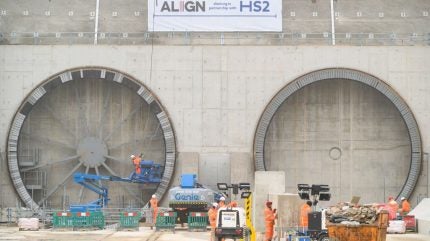
The governments of the US, the UK and the EU have all announced ambitious plans to invest significantly in their infrastructure sectors as a way to create jobs and lead their economies out of the recessions caused by the Covid-19 crisis.
In the US, Joe Biden’s infrastructure plan has pledged $1.3bn to the sector over the next ten years, while UK Chancellor of the Exchequer Rishi Sunak has set the bill at £100bn for infrastructure specifically “to drive the UK’s recovery and support jobs”. The EU has proposed a €1.8bn stimulus package.
How much will the Covid bill come to?
At a time of low interest rates and, in some cases, a strong need for infrastructure improvements, betting on the infrastructure sector in such a way would appear sound. However, the costs of the pandemic are still unknown, and indeed hard to predict, and funds might be in short supply for many governments.
To make things more complicated, infrastructure is by nature a long-term asset class and projects, especially large and potentially lucrative ones, often take much longer and end up costing much more than originally anticipated.
In the UK, for example, the High Speed 2 project’s first phase was delayed by five years to 2031 with a price bump of £22bn up to a total of around £80bn for the entire project. Crossrail – originally scheduled to open in December 2018 at a cost of £4bn, and also known as the Elizabeth Line – is now scheduled for 2022 and is expected to require at least an extra £1bn to complete.
In the US, the Purple Line metro project in the Washington, DC metropolitan area was suspended last summer almost two decades after its conception due to a series of lawsuits, environmental concerns and rising costs.
[Keep up with Investment Monitor: Subscribe to our weekly newsletter]
In Europe, the Berlin Brandenburg Airport opened nine years behind schedule at three-times the originally estimated cost.
The gap between plans and reality
One of the reasons behind the spectacular failure of the Purple Line project was the lack of cooperation between the public and the private sector. The private sector is, even in normal times, often required to step in to help foot growing bills and solve technical issues that government officials often do not factor into their frequently optimistic plans.
The chart below shows that, when compared against GlobalData’s information on announced projects, the UK National Infrastructure Delivery Plan 2016–21 will require significant contributions from the private sector in certain areas.
The issue with government plans is that they are hardly ever written by investment managers, developers, constructors, or any of the players who work in the field and get their hands dirty or experience the challenges regularly faced in the infrastructure sector.
This means, for instance, that there is often a gap between what government plans promise and what is feasible, or even just needed, on the ground.
There is often a gap between what government plans promise and what is feasible on the ground.
After the global financial crisis of 2008, economists and governments alike looked at infrastructure spending as a promising option to lead countries and regions back to growth. They have taken a more cautious approach since.
Most of the money that was spent back then went to low-hanging, smaller projects that created jobs and added some value to the economy, but not to the extent promised by governments. At present, for example, the US has a huge need at state level for water treatment infrastructure projects, but they are not very expensive and do not tend to generate high revenues or even increase employment rates in the sector by much.
In addition to this, Kenneth Rogoff, a professor of economics and public policy at Harvard University, also notes how investment in maintenance and repair is where the highest returns are on offer in advanced economies, rather than in building infrastructure from scratch.
Governments are wise to look at infrastructure as a tool to both create jobs and value for the economy, but they should make sure their plans are realistic and seek the opinions of industry experts as well as the private sector.
Home page photo of the HS2 construction in the UK by Leon Neal/Getty Images.


